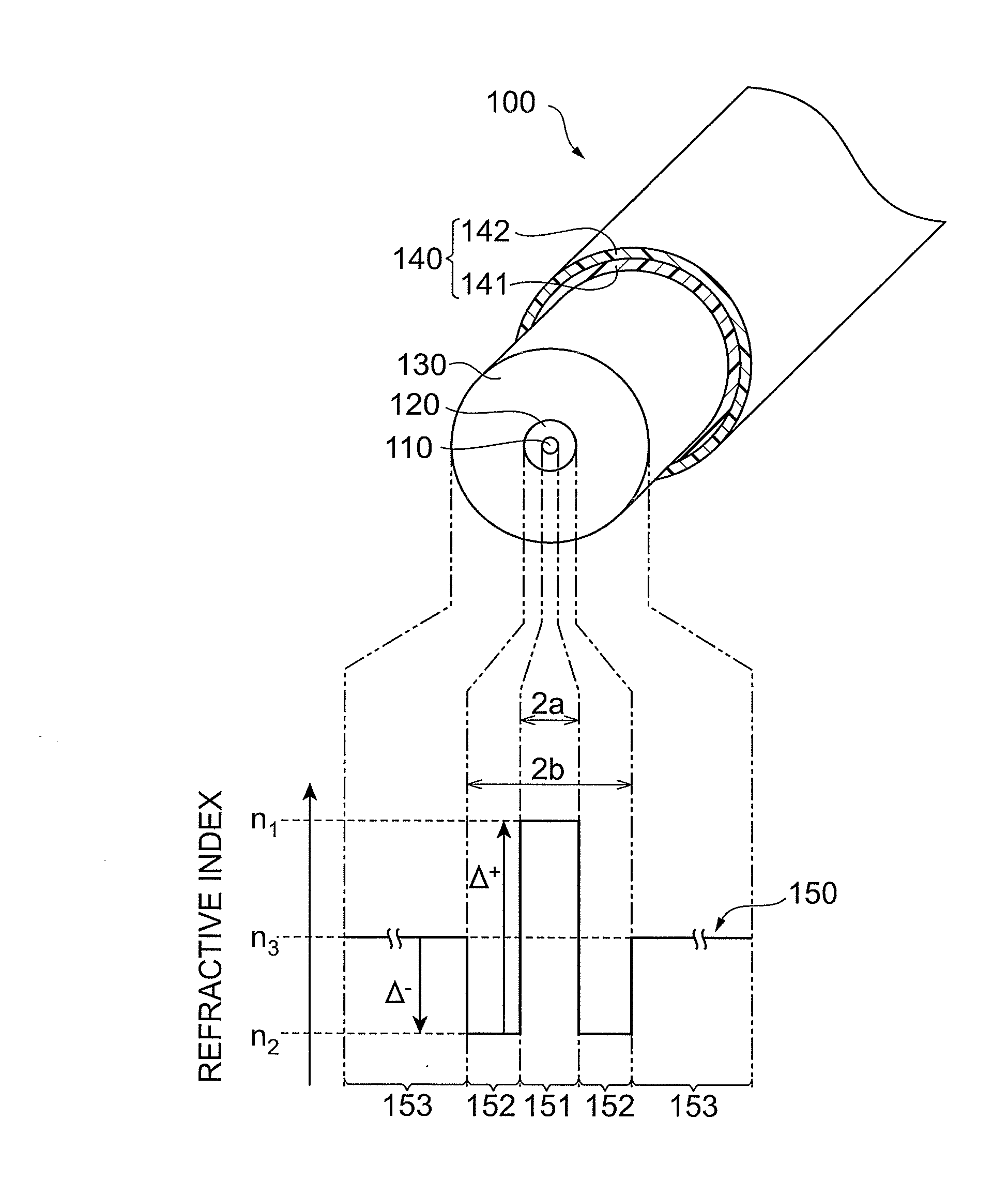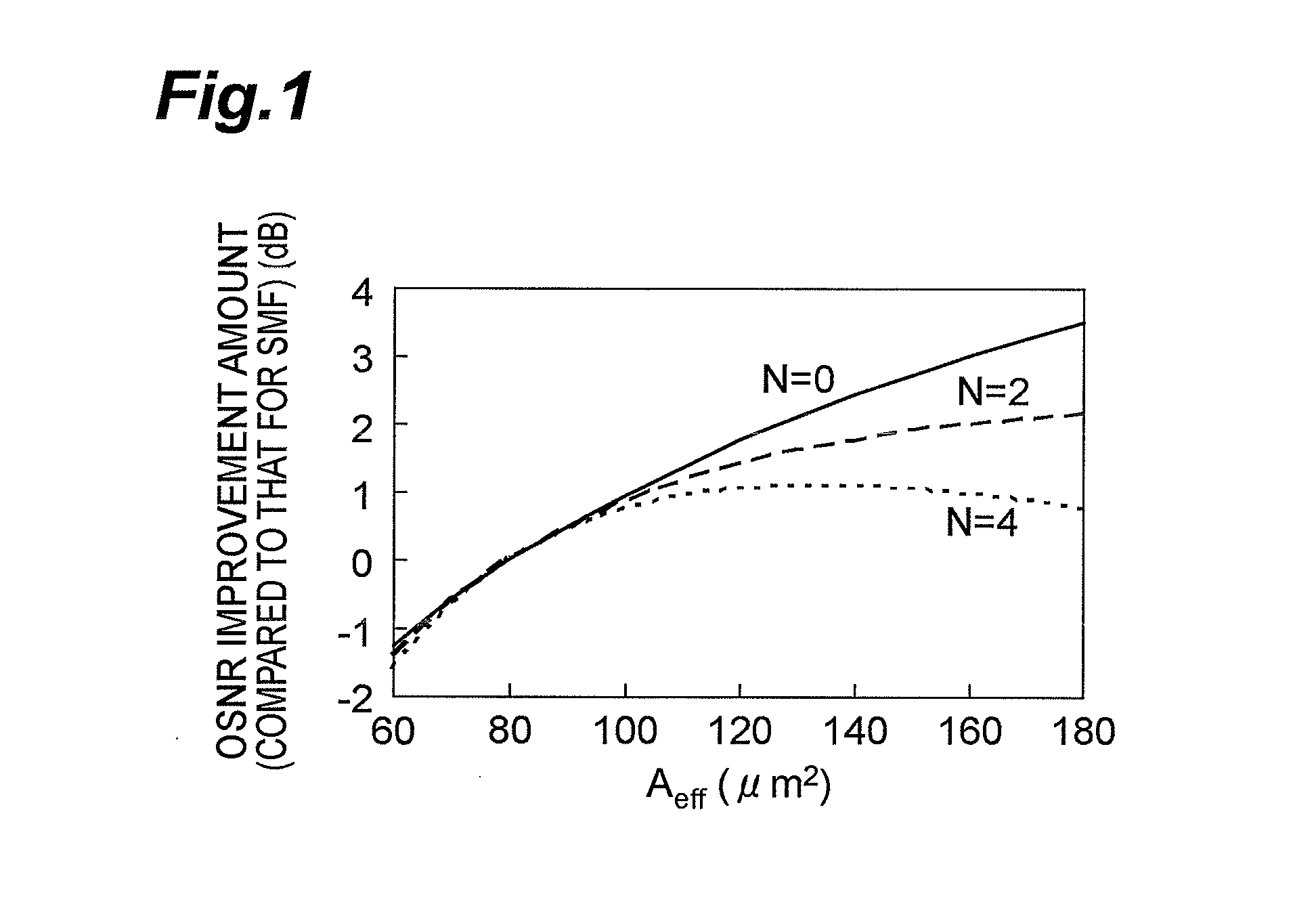Optical fiber and optical communication system including same
a technology of optical communication system and optical fiber, applied in the field of optical fiber and optical communication system, can solve the problems of deteriorating the osnr of the optical communication system as a whole, reducing the effective area of a/sub>eff /sub>in an optical fiber, and achieving the effect of long repeater span and higher power
- Summary
- Abstract
- Description
- Claims
- Application Information
AI Technical Summary
Benefits of technology
Problems solved by technology
Method used
Image
Examples
Embodiment Construction
[0032]In the following, embodiments of the optical fiber and optical communication system according to the present invention will be explained in detail with reference to FIGS. 1, 2A, 2B, 3 to 6, 7A to 7C, 8, 9A, and 9B. In the description of the drawings, identical or corresponding components are designated by the same reference numerals, and overlapping description is omitted.
[0033]First, an optimal value of the effective area Aeff of the optical fiber according to the present embodiment, which is employable in a transmission optical fiber of an optical communication system, will be explained. From the viewpoint of characteristics of the optical fiber, the OSNR is approximately represented by the following expression (1):
OSNR(dB)∝10 log(Aeff×α(1 / km))−αsp(dB)×N−α(dB / km)×L(km) (1)
where Aeff is the effective area of the optical fiber at a signal light wavelength, α is the transmission loss at the signal light wavelength, αsp is the splice loss, N is the number of connections per rep...
PUM
 Login to View More
Login to View More Abstract
Description
Claims
Application Information
 Login to View More
Login to View More - R&D
- Intellectual Property
- Life Sciences
- Materials
- Tech Scout
- Unparalleled Data Quality
- Higher Quality Content
- 60% Fewer Hallucinations
Browse by: Latest US Patents, China's latest patents, Technical Efficacy Thesaurus, Application Domain, Technology Topic, Popular Technical Reports.
© 2025 PatSnap. All rights reserved.Legal|Privacy policy|Modern Slavery Act Transparency Statement|Sitemap|About US| Contact US: help@patsnap.com



